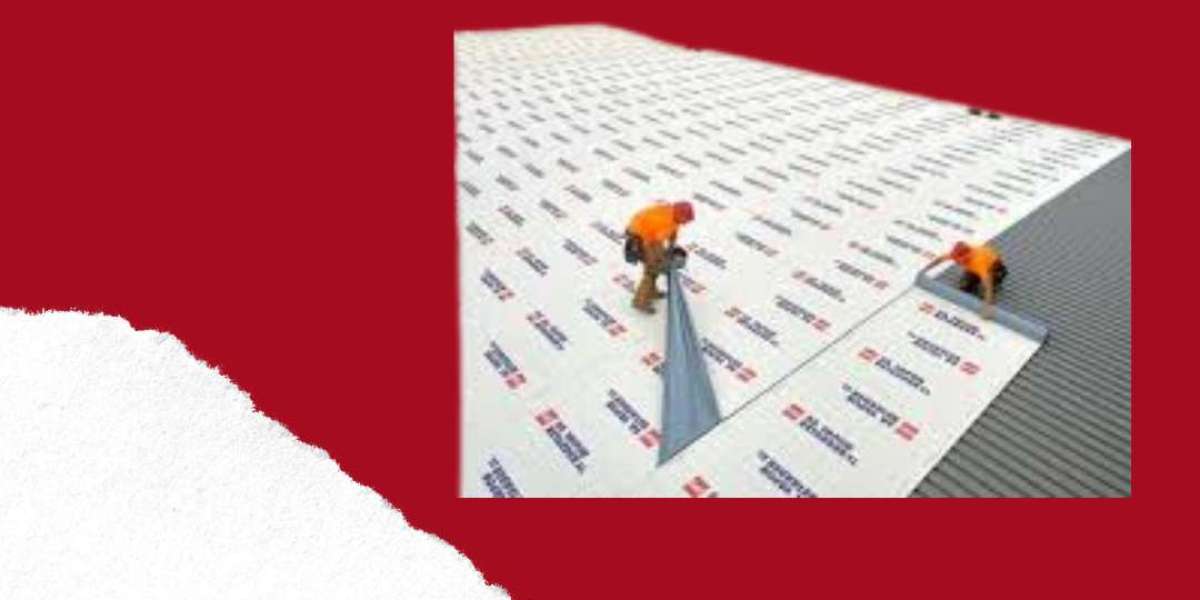When it comes to protecting your home or commercial property, the roofing system plays a vital role in ensuring the building’s structural integrity. One of the most critical components of the roofing system, often overlooked, is roofing underlayment. This essential layer of material is placed beneath the roofing shingles, tiles, or metal to provide an extra level of protection against the elements. In cold and wet climates, the choice of roofing underlayment becomes even more crucial due to the potential for moisture penetration, ice dams, and extreme weather conditions. In this article, we will explore how to choose the right roofing underlayment for areas with cold and wet climates, keeping in mind the specific requirements that such regions demand. We will also touch on how roofing underlayment manufacturers and suppliers, particularly those in India, are addressing these challenges.
Importance of Roofing Underlayment in Cold and Wet Climates
Roofing underlayment acts as the first line of defense against water infiltration, preventing leaks and moisture buildup in the attic and interior of a building. In cold and wet climates, these protective qualities are even more essential. Rain, snow, and ice are common in these areas, which can lead to severe water damage if the underlayment is not properly chosen. Without the right underlayment, moisture can seep through the roofing material and freeze, leading to ice dams that cause water to back up beneath the shingles. Over time, this can lead to rot, mold, and structural issues.
Additionally, roofing underlayment provides an extra layer of thermal insulation, which is particularly beneficial in cold climates. By choosing the right type of underlayment, you can significantly reduce heat loss and improve energy efficiency in the building.
Types of Roofing Underlayment Materials for Cold and Wet Climates
When selecting roofing underlayment for cold and wet climates, it’s essential to understand the different types of materials available, as each offers specific benefits and drawbacks. The most common types of roofing underlayment are asphalt-saturated felt, synthetic underlayment, and rubberized asphalt.
Asphalt-Saturated Felt: This traditional underlayment is widely used due to its affordability and ease of installation. However, it may not provide the best protection against extreme weather, as it can absorb moisture, which could lead to mold and mildew growth. This type of underlayment may also break down over time, especially in cold and wet conditions. While it can still serve as an effective barrier in moderate climates, it may not be the best choice for areas with heavy snowfall or persistent rain.
Synthetic Underlayment: Made from materials such as polypropylene or polyester, synthetic underlayment offers enhanced durability and resistance to the elements compared to asphalt-saturated felt. It is lightweight, tear-resistant, and less prone to absorbing moisture, making it an excellent choice for cold and wet climates. Synthetic underlayment also offers better protection against ice dams and water infiltration, providing a more robust barrier in regions with harsh weather conditions.
Rubberized Asphalt: This type of underlayment is typically used for areas prone to severe water exposure, such as valleys and eaves. Rubberized asphalt is a self-adhesive material that creates a watertight seal, preventing water from seeping through the roofing system. It is particularly useful in cold climates where the risk of ice dams and water infiltration is high. However, it can be more expensive than other underlayment options and may require more expertise to install correctly.
Key Features to Consider for Cold and Wet Climates
When selecting the right roofing underlayment for cold and wet climates, it’s important to consider several key features. These features will help you ensure that the underlayment can withstand the unique challenges posed by these environments.
Water Resistance: In cold and wet climates, the ability of roofing underlayment to resist water is paramount. A high-quality underlayment should be waterproof or water-resistant to prevent moisture from seeping into the roof deck. Synthetic and rubberized asphalt underlayments are known for their excellent water resistance, which helps protect the building from leaks and damage.
Durability and Longevity: The underlayment must be durable enough to withstand the harsh conditions of cold and wet climates. This means that the material should be resistant to cracking in low temperatures, as well as to damage from prolonged exposure to moisture. Synthetic underlayments and rubberized asphalt are known for their longevity and ability to endure extreme weather conditions without degrading.
Ice Dam Protection: In colder climates, the risk of ice dams forming on the roof is significant. Ice dams occur when melting snow refreezes at the roof’s edge, creating a barrier that prevents proper drainage. Over time, water can back up behind the dam and seep into the roof, causing leaks and damage. To prevent this, it’s essential to choose an underlayment that provides added protection against ice dams. Self-adhesive rubberized asphalt underlayment is often used in areas prone to ice dams, as it creates a seamless, watertight barrier.
Breathability: While water resistance is crucial, roofing underlayment should also allow moisture to escape from the roof deck. This is especially important in areas where condensation can accumulate, such as attics. A breathable underlayment will help prevent mold and mildew growth by allowing trapped moisture to evaporate, reducing the risk of damage to the roof structure.
Insulation: In cold climates, the underlayment should provide an extra layer of insulation to help maintain indoor temperatures and reduce energy costs. Some synthetic underlayments are designed with additional insulating properties, making them an excellent choice for energy-efficient buildings.
Choosing the Right Roofing Underlayment Manufacturer
When selecting roofing underlayment for your cold and wet climate needs, it’s essential to partner with a reputable Roofing underlayment manufacturer. The quality of the underlayment will directly impact the longevity and performance of your roof. Look for manufacturers who use high-quality materials and have a proven track record of producing durable, reliable underlayments for challenging climates.
In India, there are several roofing underlayment suppliers offering a range of products tailored to the country’s diverse weather conditions. With extreme weather patterns, including heavy monsoons and cold winters in certain regions, it’s crucial to select a roofing underlayment that can withstand these conditions. Roofing underlayment manufacturers in India are increasingly focusing on producing high-performance products that provide enhanced protection for homes and commercial buildings in these areas.
Roofing Underlayment Suppliers in India: What to Look For
When sourcing roofing underlayment in India, it’s important to work with a supplier who can provide high-quality products designed for your specific climate needs. Choose a supplier that offers a wide range of underlayment options, from traditional asphalt-saturated felt to synthetic and rubberized asphalt products. Additionally, ensure that the supplier provides products that meet industry standards and have been tested for performance in extreme conditions.
A reliable Roofing underlayment supplier should also offer excellent customer support and installation guidance. If you're unfamiliar with roofing underlayment installation, look for suppliers who can provide detailed instructions or connect you with trusted roofing contractors.
Conclusion: The Right Underlayment for Cold and Wet Climates
Choosing the right roofing underlayment for cold and wet climates is essential to ensuring the durability and longevity of your roofing system. In areas with harsh weather conditions, such as heavy rain, snow, and freezing temperatures, it’s critical to select an underlayment that offers water resistance, durability, and ice dam protection. Synthetic underlayments and rubberized asphalt are excellent choices for these conditions, providing the added protection needed to prevent leaks, water damage, and energy loss.
Whether you’re working with a Roof underlayment in India or sourcing a supplier locally, make sure to choose a product that meets your specific needs. With the right underlayment in place, you can rest assured that your roof will provide the protection and comfort needed for years to come.
Frequently Asked Questions (FAQs)
Can roofing underlayment be installed over old underlayment? It’s generally not recommended to install new roofing underlayment over old material. The old underlayment may have degraded or been damaged, which could compromise the protection provided by the new layer. It's best to remove the old underlayment and install a fresh layer for optimal protection.
Is roofing underlayment the same as roof decking? No, roofing underlayment is not the same as roof decking. Roof decking is the structural base of the roof, typically made from plywood or oriented strand board (OSB), while underlayment is a protective material installed on top of the roof deck before the final roofing material is applied.
Can roofing underlayment improve energy efficiency? Yes, certain types of roofing underlayment, particularly those with added insulation properties, can help improve a building’s energy efficiency. By reducing heat loss through the roof, these underlayments can help maintain more consistent indoor temperatures, potentially lowering heating and cooling costs.








